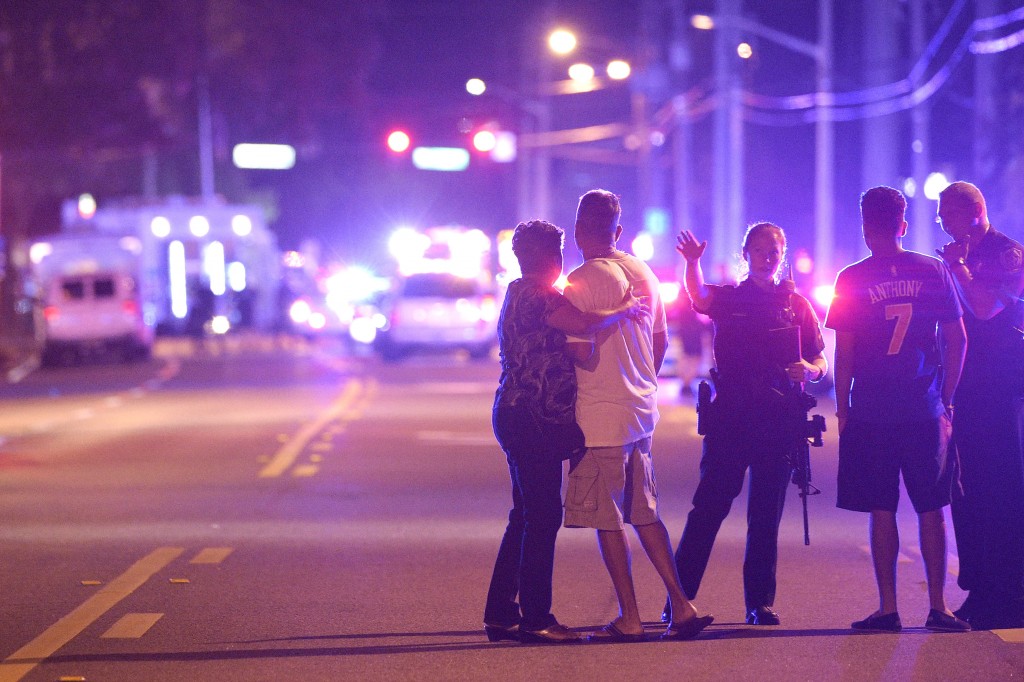The recent mass shootings that have occurred around the world, including the tragedy at a gay night club in Orlando, Florida, brings up the issue of what you can do to help yourself survive a mass shooting in a public place. An act of terrorism or violence, domestic or foreign born, can happen anywhere and at any time.
The following suggestions are meant to make you think and plan ahead to increase your chances of surviving a mass shooting in locations such as a night club, sports or concert venue, movie theatre, restaurant, etc. Each incident and the circumstances surrounding that situation will dictate your reactions and choices. This discussion is not to make you paranoid or to live your life in fear, but to allow you to enjoy yourself and prepare to act quickly, when you least expect to be fighting for your life.
- Pre-Scan. As you arrive at a location get familiar with the parking lot and surrounding area. Upon entry observe where the regular and emergency exits are located. Know where the restrooms are, what kind of windows, stairs, elevators, escalators exist in the building, where is the kitchen, bar, or administrative offices etc. Plan ahead.
- Be aware, but not paranoid. Look around and be aware of the type of clientele at the location. If you see something out of the ordinary or someone acting strangely or carrying objects that look out of place notify security, management, or any employee. Forewarn and tell others in your party or your family and friends what you are feeling and observing. As the old saying goes, “If you see something, say something.” Of course, call 911 if an emergency occurs or you believe is about to happen. Possibly turn your cell phone video camera on and let it run for possible audio and video evidence.
- If you haven’t already, exit the location immediately (if possible), when an act of violence has occurred. Get away (run if necessary) from the location and go to a spot you felt comfortable with as you arrived and scanned the area. Take cover and concealment. Remember concealment (shrubbery or curtain) only hides you while cover (concrete wall or pillar) hides and protects you. Be alert for possible additional suspects, both inside and outside.
- If you can’t safely exit the location, move quickly to a position of concealment to hide. As you move see what you can use as a weapon to defend yourself, such as a beer mug, trays, wine bottle, fire extinguisher, chair, table, trash can, broom, etc.
- If you are able to escape to a room inside the location, lock the door and barricade yourself inside. If others are with you assign tasks to each such as securing the door with furniture or a trash can, have someone calling 911 while providing the suspect’s description, turn off the lights and electronics as soon as possible, and look for additional avenues of escape or weapons to use inside that room to defend yourself.
- If you can’t exit, run, or hide, fight. This is normally the last resort. Develop a mental mindset that you will survive no matter what. Do something and take action. Don’t freeze, unless the situation dictates that is the safest thing to do for the moment. Be observant and ready to immediately engage the suspect at your first opportunity. Strike first if you can. Use anything you can as a weapon and divert the attention of the suspect away from his game plan. Put him on the defensive. Disrupt his thoughts and surprise him. Most shooters are mentally unstable, so rock his world and cause confusion for him. Slow him down. Take his control of the situation away. Hopefully others will engage and assist you while law enforcement is responding.
- Trust your instincts and sixth sense. Do something. Give yourself a chance to survive.
Hopefully, these tidbits of advice will make you think of other ways to survive a violent situation when you least expect it. #massshooting, #terrorism
As a retired Lieutenant and 32-year veteran of the Los Angeles County Sheriff’s Department, Bill Weiss worked various patrol, custody, administrative, investigative, and special assignments. He has been an Incident Commander for several major tactical incidents. He is a graduate of the University of Southern California, with a Master’s degree in Public Administration.
To follow me and or purchase my book, “Never Again”, please go to my website- https://billcweiss.com.


